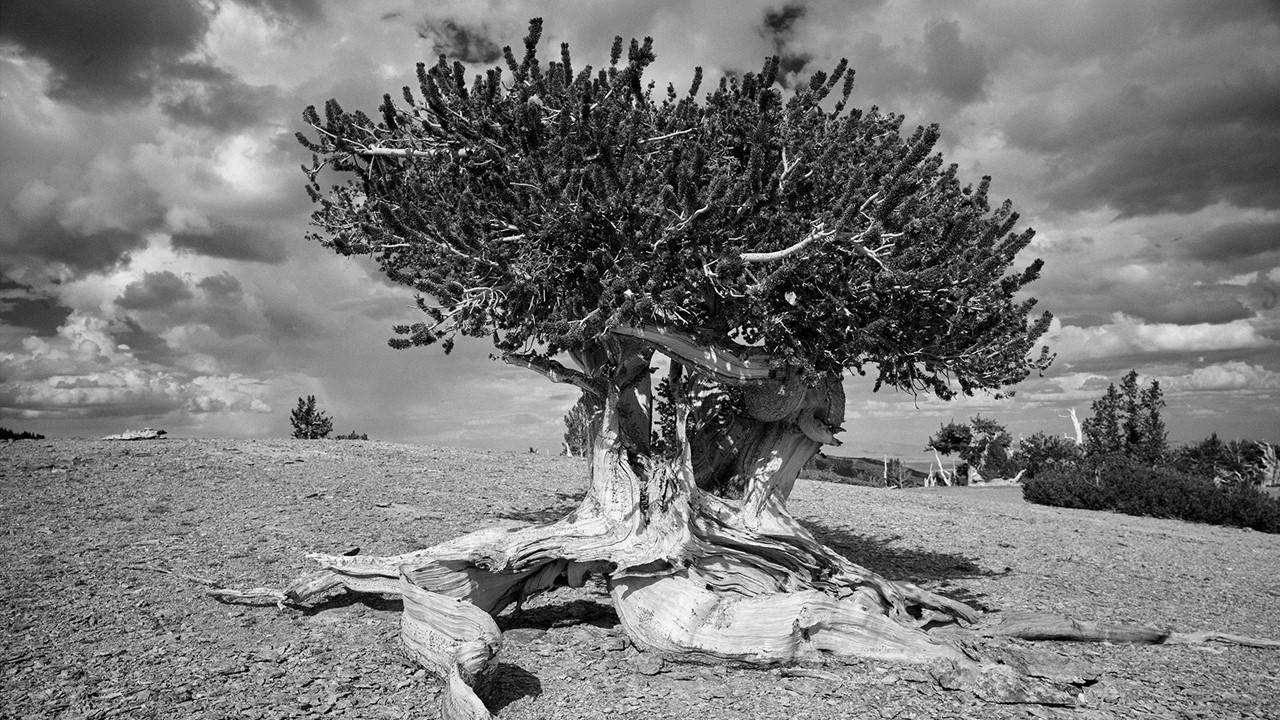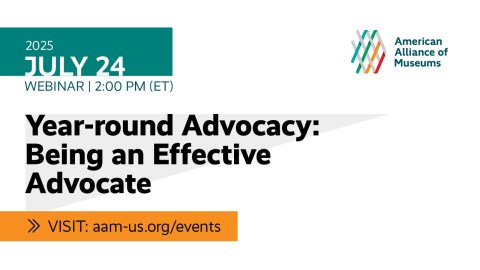
“‘Inconceivable!’ You keep using that word. I do not think it means what you think it means.”
—Mandy Patinkin, in the role of Inigo Montoya, The Princess Bride
This article which appeared in the March/April 2021 issue of Museum magazine, a benefit of AAM membership, is adapted from the 2021 edition of the Alliance’s annual forecasting report. Download your free copy of TrendsWatch: Navigating the Disrupted Future for extended content, including a framework for museum action on this important issue.
Last year was truly a “syndemic” year—shaped by multiple cataclysms, including a global pandemic, wildfires on the West Coast that burned over 5.8 million acres, six major hurricanes, and even a plague of locusts. On top of these disasters, we faced a long overdue—but still painful—reckoning with the long-term blight of racism. While it might seem like epic bad luck to face so many crises at once, in fact, these were not independent events—they are deeply entangled with each other and stem from forces that will continue to reshape the world in coming decades. Responding to these disruptions will not be a matter of finding solutions and moving on. It will require fundamental shifts in how we assess risk, navigate uncertainty, and create strategies that can succeed no matter what transpires.
One of the most critical shifts will be in museum planning. Pre-pandemic, museums were only slowly adopting formal planning processes at all. In the past decade, this lack of timely, comprehensive planning was the deficit most frequently cited by the American Alliance of Museums’ Accreditation Commission in its decisions. To help museums meet that challenge, the commission created a detailed description of good planning. But given the speed and scale of disruption in the coming decade, this model may not be enough. Museums need to enhance their planning with “strategic foresight”—a mindset and methodology that helps organizations manage uncertainty and prepare flexible, adaptive responses. Rather than using a plan to guide them through a familiar landscape to a known destination, museums must learn to forge on without knowing what lies ahead, dodging and weaving as new obstacles arise, constantly recalibrating their course toward a preferable future.
Strategic foresight is the practice of systematically observing current events and using the findings as a springboard for envisioning potential futures—the many ways things may play out. Foresight both expands the imagination and compresses uncertainties into a manageable number of possibilities. It combats apathy by empowering organizations to envision desirable outcomes and identify what they can do to create their preferred future—the world they hope to live in. Traditional planning is prone to creating a strong but brittle plan designed around one set of assumptions. Foresight helps organizations create a portfolio of actions to deploy as needed and identify strategies that may succeed in a wide variety of circumstances. Museums can use the agility they develop by integrating the skills of strategic foresight into a continual planning process to manage the coming years of intense and rapid change.
Among the many practical tools included in the 2021 edition of AAM’s TrendsWatch is an introduction to strategic foresight and a framework for integrating foresight into your organization’s daily work. Used together with the training, reports, research, and commentary that the Alliance’s Center for the Future of Museums (CFM) has been creating for over a decade, TrendsWatch: Navigating a Disrupted Future can accelerate the evolution of museum planning. I like to believe that museums that have followed the work of CFM for the past 12 years were a bit better prepared to face the challenges posed by 2020. Museums that adopt foresight now will be better equipped to face the next year as well.
This prescription may seem like one more imperative on top of the difficult day-to-day work of holding the museum together. But as you contemplate the energy it will take to integrate new ways of thinking and planning into your work, consider this: pandemics are not the only “unseen” but predictable disruptions we face. At some point in the next century there will be a major earthquake along one or more of the fault lines on the West Coast. Security experts think it highly likely that the US will experience a cyberattack in coming decades that could bring down significant portions of critical infrastructure—communications, electoral systems, the Internet, or the power grid.
These disruptions will be layered on top of an existing landscape of change—trends that have been reshaping culture, economics, technology, our political systems, and our environment. Perhaps the most significant of these disruptive trends is climate change. All told, somewhere between 4 million and 13 million people in the US will be displaced by climate change by 2100. Many US museums are located in communities that face rising sea levels, flooding, fires, extreme heat, or drought. In the face of these changes, some communities may shrink, pick up stakes and relocate, or redesign their infrastructure (at great expense) to cope with these challenges.
The work of most museums is, necessarily, long term—preserving cultural and scientific heritage for the next generation, serving their community and helping it thrive. Because of their responsibilities as stewards of the past, museums need to plan for uncertain futures, or all the good work they do day to day will be at risk. But remember, you aren’t in this alone—my colleagues and I at the Alliance are here to support your good work.
So download the 2021 edition of TrendsWatch (bit.ly/trendswatch2021), share it with your board and staff, as well as policy makers, funders, and journalists—anyone who could benefit from some tools to understand the changes buffeting museums right now. Use the report to help envision how museums can help their communities through the trying times to come, and how the museum itself can survive and thrive. Working together, we can help museums foresee their way to a better future.
Tips for Creating and Using Scenarios
Ground your scenarios—stories describing potential futures—in trends and events that could have the biggest impact on the museum and its community.
Use or adapt existing scenarios created for the field (see Resources below), or create your own.
Consider four distinct scenarios:
Explore what you believe to be the probable future.
Envision what would happen in a future of extreme constraint.
Help the museum respond to an unexpected abundance of resources.
Introduce a “wild card”—a potential disruption that would significantly change the museum’s practice.
Craft strategies based on these scenarios:
What tactics are likely to be effective under a wide range of circumstances?
Which could you implement as it becomes clear what route the future is taking?
Resources
Dispatches from the Future of Museums from the Center for the Future of Museums is a free weekly e-newsletter that jumpstarts museum foresight with a selection of news about culture, technology, the economy, the environment, and policy.
Navigating Uncertain Times: A Scenario Planning Toolkit for the Arts and Culture Sector, The Wallace Foundation, 2020
TrendsWatch: The Scenario Edition (American Alliance of Museums, 2018) presents four stories of potential futures to support museum planning.
Elizabeth Merritt is vice president, strategic foresight and founding director of the Center for the Future of Museums (CFM) at the American Alliance of Museums. She is the author of the Alliance’s annual TrendsWatch report and compiles CFM’s weekly e-newsletter Dispatches from the Future of Museums.








